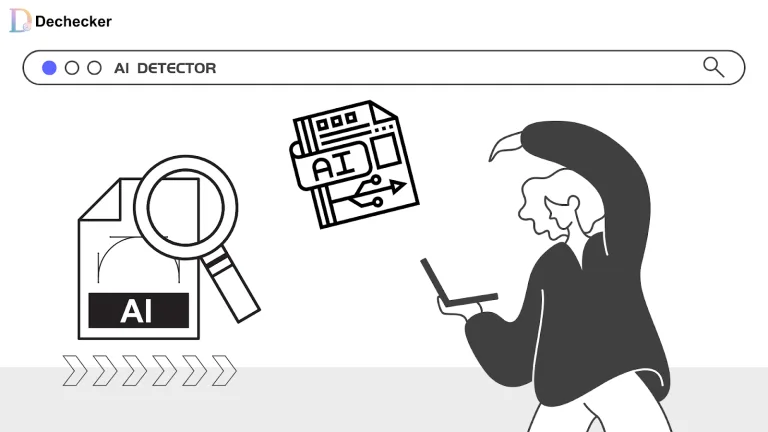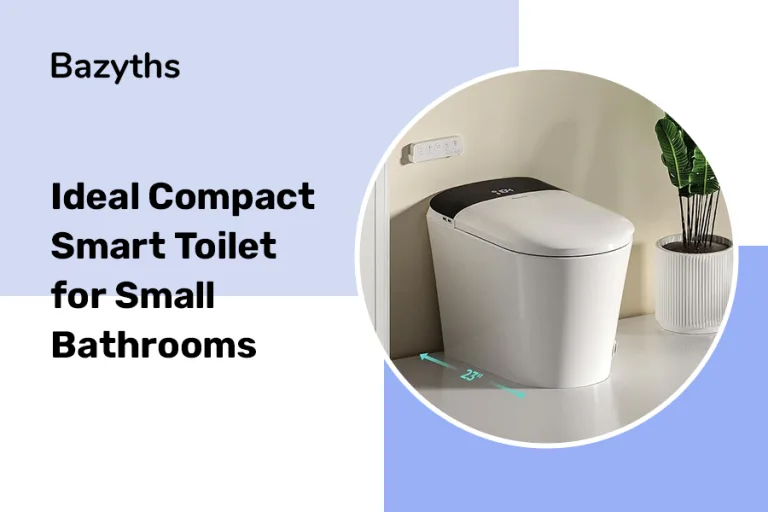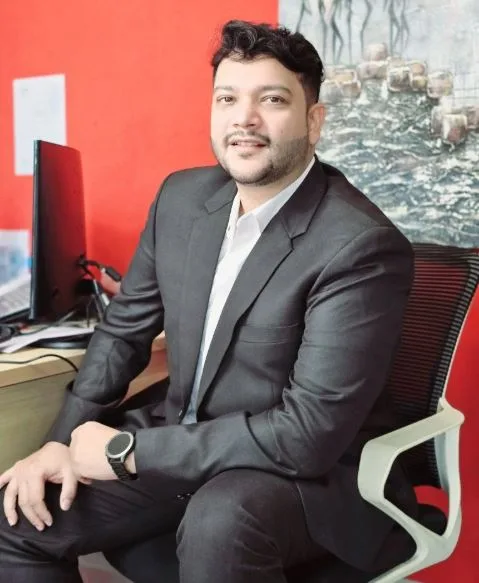Inside the Founder Playbook: Pablo Gerboles Parrilla’s End-to-End Method for Rapid Startup Scaling
There’s a moment in every startup’s life cycle when founders realize they’ve built something nobody wants. By then, they’ve burned months of runway, exhausted their team, and lost momentum to competitors who understood the market better. Pablo Gerboles Parrilla spent years ensuring he’d never face that moment—and now he’s built a system that guarantees his clients won’t either.
The Spanish entrepreneur behindPabs Marketing didn’t arrive at his marketing-first philosophy through business school theory or Silicon Valley trends. He learned it the hard way: by watching brilliant technical teams build sophisticated products that failed commercially, and by recognizing that the gap between innovation and adoption isn’t technical—it’s strategic.
His solution flips conventional startup wisdom. While most founders obsess over features, roadmaps, and technical architecture, Gerboles Parrilla starts with a single question that makes venture capitalists uncomfortable: How will we sell this before we build it?
When Athletic Discipline Meets Commercial Reality
Before Gerboles Parrilla was launching seven-figure ventures, he was grinding through collegiate golf tournaments at Florida Atlantic University and the University of South Alabama. His best round came at the 2013 Cobra PUMA Invitational —a performance that required the same calculated risk management he now applies to product launches.
Professional golf teaches brutal lessons about preparation versus execution. You can have perfect form, ideal conditions, and a flawless strategy—but if you can’t close under pressure, none of it matters. That same ruthless focus on outcomes over process defines how Pabs Marketing operates today.
The connection isn’t metaphorical. Golf demands you play the course as it exists, not as you wish it were. Business requires the same pragmatism. Founders who fall in love with their vision often ignore market signals telling them to pivot. Gerboles Parrilla’s athletic background trained him to read conditions, adjust strategy mid-round, and prioritize winning over looking good.
In golf, consistency beats intensity. In startups, the same rule applies. It’s not about one viral launch or one big funding round; it’s about showing up daily, executing with precision, and adapting faster than your competition.
The Problem With Building First, Marketing Later
Most technology companies operate backwards. They hire brilliant engineers, build elegant systems, and create products that solve interesting technical problems. Then they hand it to marketing and say: make people want this.
This approach fails because it assumes the market will recognize value once it exists. But market demand doesn’t work that way. Customers don’t care about your architecture, your innovation, or how hard you worked. They care whether your product solves a problem they’re willing to pay to fix—right now.
Gerboles Parrilla recognized this pattern early. Too many founders treated marketing as distribution rather than validation. They’d build entire products based on assumptions, then act surprised when customers didn’t materialize. The fix isn’t better marketing—it’s building what the market already wants.
That insight birthed the marketing-first philosophy: let commercial viability dictate technical decisions from day one. Before writing code, map out customer acquisition. Before designing features, validate willingness to pay. Before scaling infrastructure, prove the business model works at small scale.
It sounds obvious. But most startups still build technology hoping to find customers, rather than finding customers and building what they’ll buy.
How Marketing-First Development Actually Works
The marketing-first approach isn’t about prioritizing advertising over product quality. It’s about making commercial viability the primary constraint on every technical decision.
Here’s how it operates in practice:
Start with market validation, not product vision. Most founders begin with “we’re building X.” Gerboles Parrilla’s team begins with “we’ve identified Y customers willing to pay Z for a solution to problem W.” The product emerges from validated demand, not visionary thinking.
Let customer acquisition channels determine feature priority. If your primary channel is content marketing, build features that create shareable outcomes. If it’s enterprise sales, build features that reduce implementation friction. The roadmap serves the go-to-market strategy, not engineering preferences.
Build minimum viable commerce, not minimum viable product. An MVP that nobody buys isn’t viable. The team focuses on creating the smallest product that generates revenue, then iterates based on what customers actually pay for versus what they say they want.
Automate growth before automating operations. Most technical founders optimize infrastructure before they’ve proven the business model. Gerboles Parrilla inverts this: automate customer acquisition and retention first, because revenue solves most operational problems.
This framework explains why Pabs Marketing clients see rapid traction. They’re not launching better products—they’re launching products that were reverse-engineered from proven market demand.
The Four Questions That Prevent Expensive Mistakes
When Pablo Gerboles Parrilla evaluates a new venture, he doesn’t ask whether it’s technically feasible or innovative. He asks four questions that expose whether a business idea is commercially viable:
Who is already trying to solve this problem and failing? If nobody’s attempted it, that’s a red flag, not an opportunity. Markets don’t leave obvious gaps unfilled. Either you’ve misunderstood the problem, or there’s no profitable solution.
What would customers pay for this tomorrow if it existed? Hypothetical willingness to pay means nothing. Gerboles Parrilla looks for customers who will pre-pay, sign letters of intent, or commit resources before the product launches. That’s validation. Everything else is flattery.
What’s the simplest version that generates revenue in 90 days? If you can’t articulate a path to paying customers within one quarter, your scope is too ambitious. The team forces founders to identify the absolute minimum that creates commercial value, then builds only that.
How does this scale without proportionally scaling headcount? Labor-intensive businesses might be viable, but they’re not venture-scalable. The team looks for business models where revenue grows faster than costs—typically through automation, network effects, or leveraged distribution.
Most startups fail one or more of these tests. The ones that pass become candidates for Pabs Marketing’s full methodology.
AI as the Execution Layer, Not the Strategy
Gerboles Parrilla sees artificial intelligence differently than most founders. He doesn’t view it as a product feature or a competitive advantage. He sees it as infrastructure that finally makes marketing-first development practical at scale.
AI handles what used to require entire teams: customer research, behavioral analysis, message testing, campaign optimization, even content creation. This compression of timelines means founders can validate market demand in days rather than months.
At Pabs Marketing, AI operates as the execution layer beneath human strategy. The team identifies target customers, defines value propositions, and maps acquisition channels. Then AI handles the mechanical work—segmenting audiences, personalizing outreach, testing variations, optimizing conversion paths.
This isn’t about replacing marketers. It’s about eliminating the grunt work that prevents marketers from thinking strategically. When AI handles execution, humans focus on insight, positioning, and creative differentiation—the things that actually win markets.
One example: the crypto payment processing platform Gerboles Parrilla launched. Businesses wanted to accept cryptocurrency but lacked simple, compliant solutions. The team validated demand first, then built a streamlined system where companies could complete KYC and start accepting payments immediately. AI handled the technical complexity behind a simple interface, allowing rapid customer onboarding without proportional operational scaling.
The result isn’t just efficiency—it’s a business model where revenue grows exponentially while costs grow linearly.
Why Most Agencies Get It Wrong
Traditional marketing agencies treat themselves as service providers. Clients tell them what to promote, they create campaigns, they report metrics. The relationship is transactional.
Gerboles Parrilla rejects this model entirely. Pabs Marketing operates as a strategic partner, not a vendor. They turn down most projects—only taking on ventures they believe can succeed commercially. When they commit, they’re invested in outcomes, not deliverables.
This selectivity changes everything. Most agencies optimize for client retention, which means avoiding hard truths about unworkable business models. Gerboles Parrilla’s team will tell founders their idea won’t work and walk away rather than take their money building something destined to fail.
That honesty attracts a specific type of client: founders who want strategic truth over comfortable validation. They’re not buying marketing services—they’re buying pattern recognition from someone who’s launched multiple seven-figure ventures and knows which early signals predict success versus failure.
The team also brings operational depth most agencies lack. They help with legal structuring, tax optimization, international expansion, even founder relocation strategies. Because they’ve built global businesses themselves across the U.S., Latin America, and Europe, they understand how regulatory environments, talent markets, and capital structures interact.
This comprehensive approach means clients aren’t just getting marketing—they’re getting institutional knowledge about how to build businesses that scale sustainably.
The Philosophy Behind Staying Small to Become Big
Gerboles Parrilla preaches a counterintuitive philosophy: stay small long enough to become big enough. In an era obsessing over hypergrowth and unicorn valuations, this sounds like surrender. It’s actually strategic patience.
Too many startups scale prematurely. They raise capital, hire aggressively, and expand into new markets before perfecting their core business model. When growth reveals structural weaknesses—poor unit economics, misaligned incentives, cultural dysfunction—they’re too big to pivot and too committed to turn back.
The alternative is disciplined growth. Build strong foundations—team, culture, systems, structure—before attempting scale. Prove the business model works at small scale, where mistakes are survivable. Systematize what works before hiring people to execute it. Ensure quality compounds rather than dilutes as you grow.
This approach is especially critical for B2C businesses where customer experience directly impacts brand reputation. One viral negative review can destroy years of careful brand building. Better to grow slowly with delighted customers than quickly with disappointed ones.
The globally distributed structure Gerboles Parrilla built supports this philosophy. By leveraging talent across continents, he maintains lean operations with minimal overhead. The businesses can operate profitably at a smaller scale, removing the pressure to grow before they’re ready.
When they do scale, it’s from strength rather than necessity.
What Comes Next: The Solo Billionaire Thesis
Gerboles Parrilla makes a prediction that sounds absurd until you think it through: we’ll soon see the first billionaire who runs a global company completely alone, supported entirely by AI and automated systems.
No employees. No offices. No organizational chart. Just one person with clear vision, strategic judgment, and intelligent systems handling everything else—operations, customer service, logistics, even product development.
This isn’t science fiction. The technology exists now. AI can handle customer research, product design, software development, marketing execution, sales outreach, financial management, and legal compliance. What it can’t do is provide strategic vision, make high-stakes decisions, or build relationships with key partners.
Those uniquely human capabilities are what the solo billionaire provides. Everything else becomes infrastructure.
Pabs Marketing is building toward this future deliberately. The tools they’re creating don’t just automate tasks—they automate entire business functions. The goal is letting founders focus exclusively on the 20% of activities that genuinely drive growth: vision, strategy, and relationships.
As AI capabilities expand, that 20% will become even more concentrated. The founders who win won’t be the ones who can do everything—they’ll be the ones who know what to focus on and let intelligent systems handle the rest.
The Discipline That Separates Winners From Dreamers
As AI compresses timelines and reduces technical barriers to entry, the startup landscape is becoming paradoxically more competitive. Anyone can build a product now. The differentiator isn’t technical capability—it’s strategic clarity and execution discipline.
Gerboles Parrilla’s athletic background gave him both. Professional sports teach you that talent without discipline loses to discipline without talent. Business operates the same way. Brilliant founders with poor execution lose to competent founders who execute relentlessly.
The marketing-first philosophy is ultimately about discipline—the discipline to validate before building, to prioritize commercial viability over technical elegance, to make hard decisions based on market feedback rather than founder ego.
That discipline, combined with AI-powered execution speed, creates an insurmountable advantage. While competitors are still debating features and architecture, marketing-first teams are already acquiring customers and iterating based on revenue data.
The question for founders isn’t whether they should adopt this approach. The question is whether they have the discipline to execute it.







